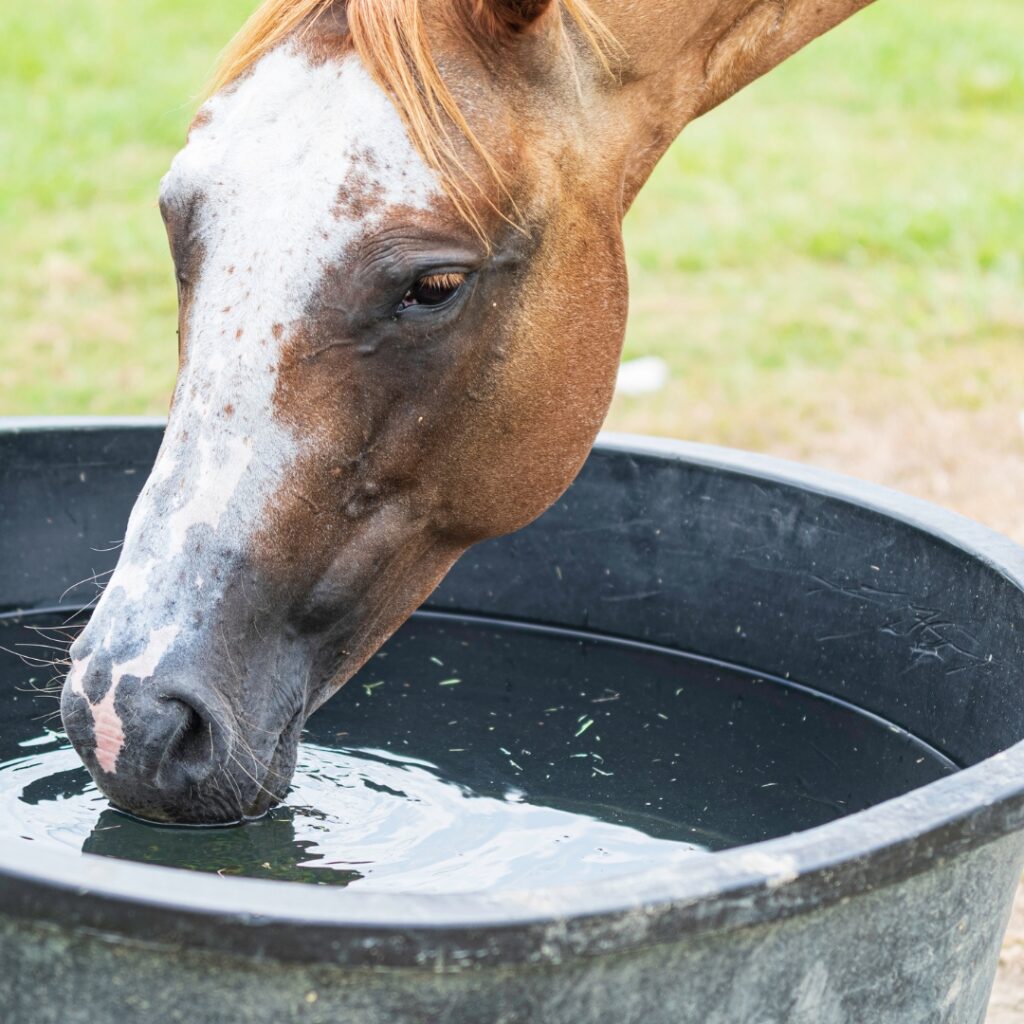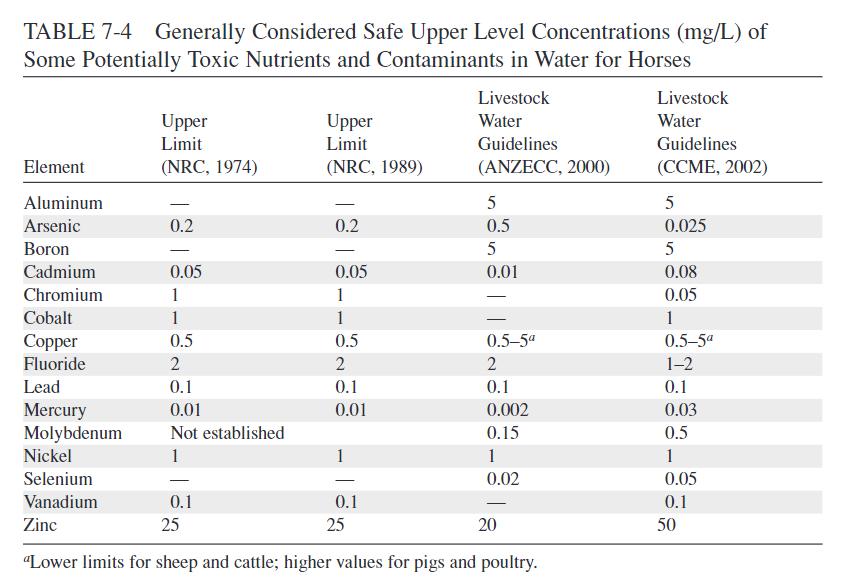
I have recently had multiple clients ask me about water consumption in relation to equine nutrition. Did you know that water is one of the 6 main nutrient categories according to the NRC, 2007. Therefore, it should not be overlooked. This week’s blog post is going to summarize some interesting research as well as provide some guidelines on what safe water is.
Water is essential. Water intake occurs from both directly drinking water and consuming soaked feed. There is also indirect water intake through metabolism. It is known that diet and water are closely related as research has clearly shown that water intake is dependent on the amount of feed consumed as well as the composition of that feedstuff. Additionally, the reverse is also true. When water is restricted, the feed intake of that horse is significantly impacted. In horses, normal drinking behaviour is episodic. They drink about 2-8 times per day in 10-60 second episodes.
Temperature
Water temperature as well as environmental temperature is another important factor of water intake. Especially in the winter here in Canada!! In cold weather, water intake in horses has been shown to reduce. We also know that in hot weather water intake increases. Horses drink less cold water compared to warm water when the outdoor temperatures are cooler. Although warmer water is preferable in winter temperatures, it also plays a role in the growth of bacteria and algae. This highlights the importance of regularly cleaning your water trough when using heated water for the winter.
Water Quality
Similar to other animals, horses are not drinking pure water. They are consuming ground and surface water, which is impacted by many factors such as runoff, evaporation, farming practices, geo chemistry, precipitation, human activity and animal activity.
The physical quality of water takes these various factors into account. When describing water quality turbidity, total dissolved solids (TDS), odour, colour, pH and temperature are taken into account. Odours in water are attributed to algae, manure, vegetation, tannins, sulfates, and microbial by-products. Odour is not easily quantified, therefore in livestock nutrition water quality is based on total dissolved solids.
Total dissolved solids are a measure of the aggregate composition of ions present in the water but does not differentiate between the types of ions present. The type of ion present can influence water palatability. Generally, surface water has a lower TDS than groundwater. The basic parameters are: TDS < 1500mg/L indicates fresh water, 1500-5000 mg/L indicated brackish water, 5000-30,000 mg/L is saline water.
The guidelines for livestock regarding TDS suggest that 0-4000 mg/L causes no adverse effects on horses, water 4000-6000 mg/L may impact intake until the animal adapts. But water greater than 6000 mg/L may negatively impact health and productivity. These guidelines are the Australian and New Zealand livestock quality guidelines.
Upper Levels of Potentially Toxic Nutrients
Below is a chart directly pulled from the NRC, 2007 that shows the upper safe limits of potentially toxic nutrients as well as contaminants in water.

A Recent Study (In Ontario!!)
We’ll end this blog post with a quick research overview…also this study was completed at the University of Guelph! The purpose of the research was to investigate any preference or aversion mature horses had to the alteration of water pH.
The control water had a pH of 7.5, the water treatments had the following pH levels: 5, 3.6, and 2.9. During the study the horses were given two water choices in identical black buckets, the buckets were also swapped between the two locations every day. The authors found that the mature horses had a strong aversion to the lowest two pH treatments (3.6 & 2.9). The pH of 5 was weakly aversive.
Although there was strong aversion, none of the treatments were completely rejected which is often a result in preference trials. The conclusion was that the mature horses discriminate in the short term against the consumption of water with a decreasing pH.
To conclude, water is an important aspect of equine nutrition. Testing your water is a great way to increase the amount of information you have on what your horse is consuming daily. This blog post is just a brief overview, please contact Madeline with any specific questions.
References:
Cymbaluk, N. F. (1990). Cold housing effects on growth and nutrient demand of young horses. Journal of Animal Science, 68(10), 3152-3162.
Hargesheimer, E. E., & Watson, S. B. (1996). Drinking water treatment options for taste and odor control. Water research, 30(6), 1423-1430.
McDonnell, S. M., Freeman, D. A., Cymbaluk, N. F., Schott, H. C., Hinchcliff, K., & Kyle, B. (1999). Behavior of stabled horses provided continuous or intermittent access to drinking water. American journal of veterinary research, 60, 1451-1455.
Merkies, K., & Carson, J. (2011). Discrimination of water acidity by mature horses. Journal of Equine Veterinary Science, 5(31), 269.
National Research Council. Nutrient Requirements of Horses. (2007). National Academy Press, Washington, D.C.